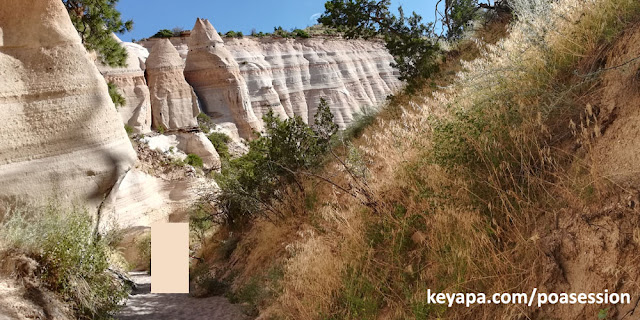 |
| What strange beasts slither across the hidden landscapes? |
There is a war going on.
It is a war with devastating consequences and monumental importance, but one which slides below the attention of most people who otherwise care about the natural state of the world. It is a war of a scope that beggars the mind, where an entire ecosystem that has existed for millennia is rapidly being destroyed.
 |
| Sagebrush covers a huge swath of the American West |
The sagebrush ecosystem in the Great Basin of the Western USA is characterized as having a shrub overstory of
Artemisia spp, with sagebrush steppe areas having a large component of perennial grasses and forbs, and sagebrush shrublands dominated by larger sage species with fewer grasses and forbs. It spreads over 11 western states and occupies 62 million hectares, and it is home to a multitude of plant and animal species, some of which are threatened or endangered.
It is in this gargantuan stage that a fight to the death has been ongoing for decades, although mostly hidden from the eyes of people. Hordes of invasive annual grasses are sweeping through the landscape like a scythe, rapidly converting sagebrush into a sea of low lying grasses. One study estimates that more than 200,000 ha of sagebrush are destroyed and replaced by exotic annual grasses
every year (Smith et al, 2021). This is a mind boggling number, an area that is twice the size of Los Angeles and nearly triple the land area of New York City!
 |
| Conversion to a sea of exotic annual grasses |
Yet typical invasive species groups in social media almost never mention the rapid destruction of these expansive ecosystems, and perhaps this is understandable. People tend to focus on invasives that are closer to home, and those that blight their day to day lives or their recreational activities. The sparsely inhabited and pristine sagebrush areas are thus a blind spot when it comes to most. The most ferocious winter annual grasses that are swallowing up the Great Basin are relative unknowns, and include species such as
Bromus tectorum (cheatgrass),
Taeniatherum caput-medusae (medusahead grass), and
Ventenata dubia.
 |
| Taeniatherum caput-medusae (medusahead grass) |
Yet the consequences of our blindness may just be as dangerous as the spread of more well known invasives in the suburbs and rural areas. Not only does the sagebrush ecosystems support major endangered species like the
Sage Grouse, but this annual grass invasion results in major economic losses as rangeland is lost.
 |
| Bromus tectorum (cheatgrass) sprawls along hillside in Bandelier National Monument in New Mexico |
In addition, the annual winter grasses use fire as a way to increase and maintain their stranglehold on the land by increasing the frequency and intensity of wildfires (see diagram below). This makes their spread dangerous for human lives and habitation, and in fact these grasses contribute to the huge wildfires that are engulfing the American West and destroying not only our homes but irreplaceable national treasures as well,
such as the iconic and ancient Sequoias trees.  |
| How one winter annual invasive achieves dominance |
It is far too late to eradicate these annual winter invasives, and efforts to reclaim land dominated by them have failed to yield fruitful results on a large scale, so land managers are now exploring various other options to mitigate their spread by focusing only on areas that have so far escaped this armageddon (Maestas et al, 2022).
We can only hope that it is not too late.
 |
| Bromus tectorum |
 |
| Aegilops truncialis |
 |
| Maturing Taeniatherum caput-medusae |
Literature CitedJeremy D. Maestas, Mark Porter, Matt Cahill, Dirac Twidwell (2022). Defend the core: Maintaining intact rangelands by reducing vulnerability to invasive annual grasses, Rangelands, ISSN 0190-0528, https://doi.org/10.1016/j.rala.2021.12.008.
Smith, J.T., Allred, B.W., Boyd, C.S., Davies, K.W., Jones, M.O., Maestas, J.D., Morford, S. L., Naugle, D.E., 2021. The elevation ascent and spread of exotic annual grasslands in the Great Basin, USA. bioRxiv 2021, 425458











2 comments:
You don't mention intentional sagebrush removal as a cause for establishment and spread of cheatgrass. I know it has happened, but I don't know to what extent.
I'll be honest and say I didn't actually know this was done in a significant way. But deliberate degradation to secondary grasslands might be a factor. I'll look it up and add to it.
Post a Comment